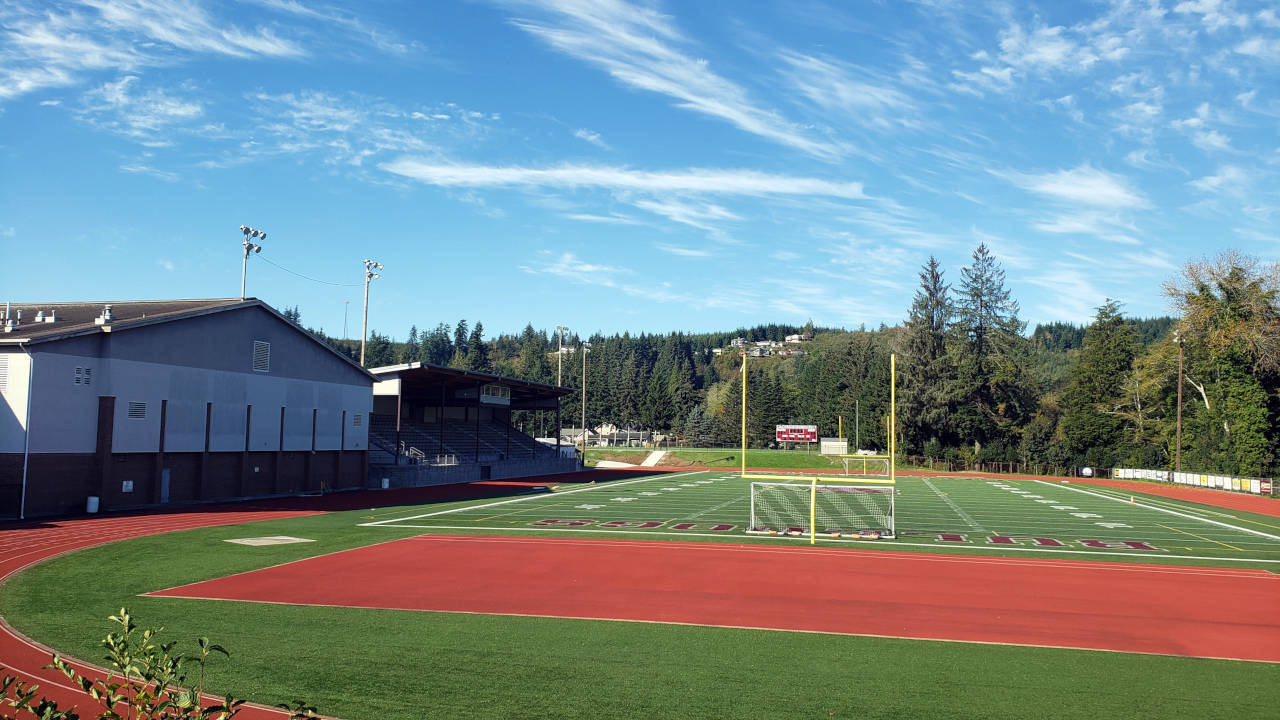Local high school athletic directors don’t expect much to change after Gov. Jay Inslee announced updates to the state’s Safe Start COVID plan on Tuesday, some of which were aimed at loosening things for outdoor sports.
The governor’s office announced a wide range of updated guidelines and procedures for operating during the ongoing coronavirus pandemic. The Safe Start guidelines include measures for organized sports ranging from youth to the professional level and including recreational activities.
For Washington state prep sports, which has been relegated to the sidelines since last March and won’t see an event take place until after the first of the year, the guidelines assign a risk level to each sport. And each county has a risk level designation based on the number of cases per 100,000 people.
Specific sports are designated into three different categories — low, moderate and high risk. The low-risk category includes non-contact sports such as tennis, swimming, cross country, track and field and golf. Moderate-risk sports include softball, baseball, soccer, volleyball and bowling while high-risk sports include football, wrestling, basketball and dance/cheer (with contact).
These categories will be used in conjunction with Safe Start plan statistical benchmarks to determine the COVID-related procedures to follow per sporting event. The benchmarks are also divided into three categories low level, moderate level, and high level, according to the rate of cases over the previous two weeks.
Grays Harbor County and the schools contained within currently reside in the high risk level activity category, which includes counties with more than 75 cases per 100,000 in the last 14 days, or greater than five percent positivity rate. In this category, team practices and training can resume for all sports provided that athletes are limited to groups of six and separated by a “buffer zone.” Brief close contact is permitted but scrimmage, league games and competition are allowed only for low-risk sports and are “discouraged if school is not conducting in-person learning.” No tournaments or spectators (sans one parent/guardian per athlete) are permitted.
Grays Harbor County was at a rate of 186 cases per 100,000 people, as of Wednesday.
Pacific County, however, sits at a rate of 80.9 per 100K, putting it into a higher-risk category (25-75 cases per 100K over previous 14 days and less than 5% positivity rate is considered moderate level). At the moderate level, scrimmages, intra-team competition and league games are allowed for both low and moderate risk sports but not for high risk sports.
The same tournament and spectator rules that apply to the high activity category apply to the moderate category as well.
The low level activity rate (less than 25 cases per 100K over 14 days and less than 5% positivity rate) allowed for all competition, tournament and spectators, with some caveats. All teams and individuals participating in tournaments must reside in low level activity counties and spectators are to follow gathering size limits laid out in the Safe Start Plan.
The Washington Interscholastic Activities Association responded to the governor’s announcement on its website.
“The WIAA has used this guidance from the Department of Health to develop new general, as well as sport-specific, return-to-play guidelines which will replace those previously tied to phasing in the Governor’s Safe Start Plan,” the organization stated in an article posted on its website (‘New Guidelines Issued for Return to Athletics and Activities’). “The Governor’s office has informed the WIAA that these guidelines must be followed and neither schools nor community sports programs have the authority to implement more lenient policies.”
According to some local school athletic directors, the new guidelines won’t change plan set in motion since mid-July.
“In my opinion, it doesn’t change a thing,” Montesano AD Tim Trimble said.. “We still aren’t bringing kids to school, and until we do, we won’t have any activities. I don’t believe things will start before January.”
“We are still planning on starting with Season 2 in January,” Raymond AD Mike Tully said. “It is helpful to have this information now to not only plan for January and beyond, but also to guide the current open coaching period. Schools had the opportunity to compete in several of the low-risk sports this fall and declined.”
According to Trimble and Tully, changes to the differing rates per county needs and the majority of schools using a remote-only learning model will have to take place before prep sports resume.
“Most districts are going to wait until they have some form of in-person learning before allowing teams to compete against other schools, no matter what the sport,” Tully said. “One thing that I like about the new document is that WIAA has provided some pretty clear benchmarks for being able to get things started. The past couple months, it’s been pretty up in the air as far as when we could start sports like football and wrestling. Now we need to know that we need to be in a low-risk county in order to start playing football, basketball and wrestling.”
“While schools may start opening, there is too much variance across the counties and thus we would have no one to play, even if we had kids in school,” Trimble said. “So, I believe we will stick with the current schedule and still hope for the best.”
To read the full breakdown of Safe Start Plan guidelines for youth and professional sports, click here.


